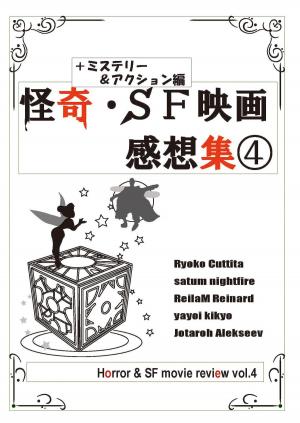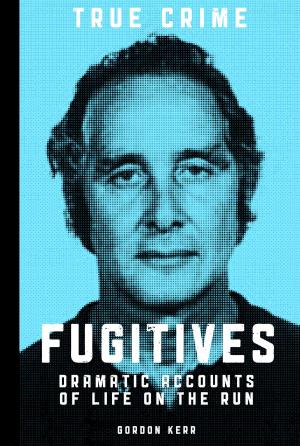PRISON LETTERS
The Complete Correspondence Between Convicted Killer Karla Homolka and Author Stephen Williams
Nonfiction, Social & Cultural Studies, Social Science, Crimes & Criminals, Murder, Biography & Memoir, Reference, True Crime| Author: | Stephen Williams | ISBN: | 9780993847226 |
| Publisher: | S.D.S. Communications | Publication: | October 5, 2017 |
| Imprint: | SDS | Language: | English |
| Author: | Stephen Williams |
| ISBN: | 9780993847226 |
| Publisher: | S.D.S. Communications |
| Publication: | October 5, 2017 |
| Imprint: | SDS |
| Language: | English |
Inconceivably, as a 20-year-old woman living at home with her parents and 2 sisters, Karla Homolka initiated a schoolgirl killing spree by drugging, raping and murdering her youngest sister as a Christmas gift for her then-fiancé Paul Bernardo.
As newlyweds, the couple fashioned a picture-perfect life in a pink, Cape Cod-style bungalow on Lake Ontario, ten minutes from Niagara Falls, where they brought their kidnapped victims and, after raping and torturing them, killed them. Somehow, Karla got away with it.
These letters between Karla and author Stephen Williams represents the only time Karla communicated with anyone outside her immediate family and a few prison friends. Nor has she ever expressed herself over such an extended period with as much introspection and thought.
Even more surprising is the fact that Mr. Williams was the last person on earth Karla would have chosen as a pen pal. "They say never say never and they're right,” Karla wrote in her first letter to Mr. Williams. “Never in a million years did I think I would ever write a letter to someone from the media, let alone you who has condemned me so harshly."
Adding to their importance and what they reveal about Karla’s character and frame of mind, is the fact that Karla is no longer in jail. She did a 12-year bit and has been out since 2005, not on parole, rather free and clear to go wherever she might choose, her “debt to society paid in full.”Karla now divides her time between Montreal and the Caribbean island of Guadeloupe. The multitude of thirty-something mommies and daddies in the middle-class Montreal suburb of Chateauguay who only recently “discovered” that their attractive, petite neighbor was the most notorious female serial killer in the world should be among the more interested in this collection of letters and the book for which they formed the foundation, “Karla: A Pact with the Devil” (2004).
A provocative and successful biography of a woman in prison, the book is a ground-breaking and seminal expose about exactly how and why Karla literally got away with murder.
Together with “Karla” and Mr. Williams’ first book on the case “Invisible Darkness,” the publication of “Prison Letters” makes it a “trifecta” (in the sense George W. Bush appropriated the word to describe the combined effect of the culmination of three tragic events, including 9/11, that turned his anemic presidency around in 2000-2001).
“Prison Letters” and its companion volume offer a great variety of perspectives and insights into who exactly Karla is, what she may or may not be and not only according to the myriad psychologists and psychiatrists who, over many years, have either examined, treated, opined, and given testimony about her, although that aspect is exhaustively documented.
Incredibly, a few powerful men in authority conceptualized Karla as a naïve, although not completely “innocent,” schoolgirl herself who fell under the Svengali-like "spell" of a violent psychopathic sexual sadist who just happened to be good-looking, well-educated, and middle-class and therefore, to a preternaturally susceptible Karla, an irresistible paragon of desirability who, despite the fact they were living in her neighborhood close to her family and friends, somehow transformed Karla into a battered woman suffering from Post-traumatic stress disorder.
Among many other things “Prison Letters” adds to Williams’ two previous non-fiction novels, is Karla’s perception of herself and, after she had served eight years in jail, how she viewed her past and possible futures.
In “Prison Letters,” for the first and last time Karla speaks articulately for herself and answers myriad questions candidly and without qualification. The majority have never been read by anyone other than Mr. Williams. None of Mr. Williams’ letters to Karla have ever been seen or read by anyone other than their recipient.
Inconceivably, as a 20-year-old woman living at home with her parents and 2 sisters, Karla Homolka initiated a schoolgirl killing spree by drugging, raping and murdering her youngest sister as a Christmas gift for her then-fiancé Paul Bernardo.
As newlyweds, the couple fashioned a picture-perfect life in a pink, Cape Cod-style bungalow on Lake Ontario, ten minutes from Niagara Falls, where they brought their kidnapped victims and, after raping and torturing them, killed them. Somehow, Karla got away with it.
These letters between Karla and author Stephen Williams represents the only time Karla communicated with anyone outside her immediate family and a few prison friends. Nor has she ever expressed herself over such an extended period with as much introspection and thought.
Even more surprising is the fact that Mr. Williams was the last person on earth Karla would have chosen as a pen pal. "They say never say never and they're right,” Karla wrote in her first letter to Mr. Williams. “Never in a million years did I think I would ever write a letter to someone from the media, let alone you who has condemned me so harshly."
Adding to their importance and what they reveal about Karla’s character and frame of mind, is the fact that Karla is no longer in jail. She did a 12-year bit and has been out since 2005, not on parole, rather free and clear to go wherever she might choose, her “debt to society paid in full.”Karla now divides her time between Montreal and the Caribbean island of Guadeloupe. The multitude of thirty-something mommies and daddies in the middle-class Montreal suburb of Chateauguay who only recently “discovered” that their attractive, petite neighbor was the most notorious female serial killer in the world should be among the more interested in this collection of letters and the book for which they formed the foundation, “Karla: A Pact with the Devil” (2004).
A provocative and successful biography of a woman in prison, the book is a ground-breaking and seminal expose about exactly how and why Karla literally got away with murder.
Together with “Karla” and Mr. Williams’ first book on the case “Invisible Darkness,” the publication of “Prison Letters” makes it a “trifecta” (in the sense George W. Bush appropriated the word to describe the combined effect of the culmination of three tragic events, including 9/11, that turned his anemic presidency around in 2000-2001).
“Prison Letters” and its companion volume offer a great variety of perspectives and insights into who exactly Karla is, what she may or may not be and not only according to the myriad psychologists and psychiatrists who, over many years, have either examined, treated, opined, and given testimony about her, although that aspect is exhaustively documented.
Incredibly, a few powerful men in authority conceptualized Karla as a naïve, although not completely “innocent,” schoolgirl herself who fell under the Svengali-like "spell" of a violent psychopathic sexual sadist who just happened to be good-looking, well-educated, and middle-class and therefore, to a preternaturally susceptible Karla, an irresistible paragon of desirability who, despite the fact they were living in her neighborhood close to her family and friends, somehow transformed Karla into a battered woman suffering from Post-traumatic stress disorder.
Among many other things “Prison Letters” adds to Williams’ two previous non-fiction novels, is Karla’s perception of herself and, after she had served eight years in jail, how she viewed her past and possible futures.
In “Prison Letters,” for the first and last time Karla speaks articulately for herself and answers myriad questions candidly and without qualification. The majority have never been read by anyone other than Mr. Williams. None of Mr. Williams’ letters to Karla have ever been seen or read by anyone other than their recipient.















